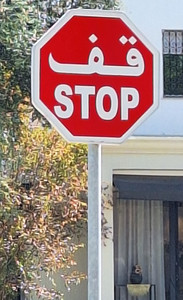Exploring Anzio and Tunisia
- kelligwiggins
- May 7
- 3 min read

Anzio, Italy
We returned to Italy from the US on March 5th. We spent a couple of weeks cleaning and working on the boat, and we were waiting for some engine parts to be shipped from England.
So on Sunday March 16 we hopped on a train and rode south along the coast to Anzio, where Allied troops landed during the Italian Campaign of World War II.
Randy and I watch a lot of documentaries and movies based on WW1 and WW2, so seeing some of the places in person is really interesting. We also enjoy reading the newspaper headlines from around the world written about that time in history.
We came across a small free Beachhead Museum that is just packed with memorabilia from the war. They showed newsreel films in both Italian and English about the Allied landings.
After visiting the museum and beach area, we walked to the Anzio Commonwealth War Cemetery, where over a thousand soldiers from the United Kingdom are buried. The cemetery has been immaculately maintained, and is a very peaceful resting place.
American soldiers that were killed near Anzio are buried at the Sicily-Rome American Cemetery and Memorial, in nearby Nettuno. There are 7,858 graves at that site. Unfortunately we did not have time to visit, but the photos from their website are beautiful.
Tunisia, North Africa
Our engine parts arrived in Ostia, but now we had to wait for a mechanic to install them. We decided to take a short trip to Tunisia, North Africa, to save a few of our precious Schengen days.
We arrived in Tunis, staying near the beach at La Marsa. We decided to walk to some of the ruins at Carthage, about an hour away. On our way, we stumbled upon the North Africa American Cemetery from WW2. It was absolutely amazing. There are 2,841 American headstones, and a Wall of the Missing where an additional 3,724 names are engraved. Several names have rosettes next to them, indicating that the missing person has since been recovered and identified.
In the memorial court there are large mosaic maps depicting the operations and supply activities of American forces across Africa and the Persian Gulf. Amazing! (you know mosaics are my favorite...)



We continued our walk to Carthage, and ended up going back two more times (by train) to see as many of the ruins as we could. There is a all-inclusive ticket that you can purchase, then visit several different sites around the area. We were able to walk to them all, although it took us 2 days.
We visited several sites in Carthage, including the following:
Byrsa Hill - also known as the Punic Quarter, an ancient neighborhood. It was destroyed in 146 BC and rebuilt by the Romans. The tomb of King of France St Louis IX, the St Louis Cathedral, and Archaeological Museum are also on this site.
The Punic Ports of Carthage - ancient harbor area
Salammbo Tophet - an ancient sacred area consisting of a sanctuary and cemetery. Many infant remains were found at this site.
The Great Cisterns of La Malga - enormous cisterns for storing water, connected to an aqueduct. They supplied water to the city of Carthage, including the vast bath complex of Antoninus.
Baths of Antoninus - Built in AD 145-162, after the Romans had destroyed the original city. One of the largest Roman bath complexes found. The ruins were enormous, and we could walk around and explore freely.
More mosaics, from a Roman villa.
We took the train all the way into Tunis to explore the market area and downtown. It is a very busy city, even during Ramadan.

We flew back to Rome after a busy week, only to find that the mechanic was not finished. My next post will share a couple of more sites visited in Rome, before we were finally able to get the boat back in the water.
Arrivederci for now!












































































































Love these photos and descriptions, thank you for keeping us updated! Have fun! Perhaps we'll catch up with you stateside this summer. :)